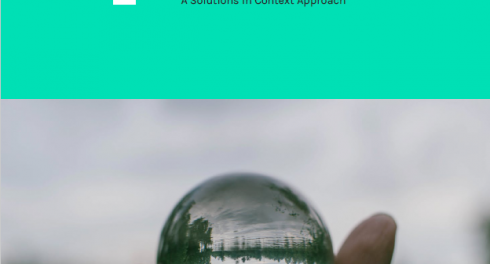
Photo by Sincerely Media on Unsplash
The Transparency and Accountability Initiative’s work around smarter grantmaking deals with conversations grantees should consider having with their funders in order to strengthen the grant cycle. While funders play a crucial role in driving relationships with their grantees, they also play an important role in building relationships among the grantees themselves. The follow up conversations to smarter grantmaking can then explore the role that funders can play in nurturing the relationship among grantee, the influence grantees exert on each other, and how to capture the influence that happens in a network.
Assessing strategic fits for the portfolios
There is room for conversations to better understand how grantees that fit under the same grant portfolio can complement one another to achieve maximum social impact in their work. A handbook by Stanford PACS explains how Program Officers (POs) can provide and work on a clear criteria to align the strategies of grantees that fall under one portfolio. Similarly, when making investment decisions to fund grantees, the PO should ask the grantees how the grant would help in advancing their non-profit’s mission and strengthen their place in the grantmaking ecosystem.
Creating relationships with grantees
Just as there are distinct advantages when POs holdback regular check-in with their grantees, there are also several benefits when grantees are brought together in a joint convening session. In my previous roles of working in the non-profit sector in Pakistan, I took an interest in strengthening the relationship dynamics among grantees. This is because it is largely beneficial for the grantee community to stick together as they operate in a restrictive environment where their activities are placed under scrutiny by the government. For me, such partnerships are also crucial in strengthening a portfolio (or “clusters”). I observed that providing an opportunity for group learning fostered a sense of community which leads to resource and information sharing among organizations working along similar themes and/or geographic areas. The grantees stopped seeing each other as competitors seeking funding, but as partners working in collaboration.
Thinking about the value of holding regular grantee convenings? A follow-up conversation Program Officers could explore would be “How can grantees that fit together in one portfolio influence each other?”
Seeking out ways to measure influence
There appear to be sparse literature that talks about funder’s role in capturing the influence grantees have on each other. In fact, the various methods that do measure influence fall within the world of communications – influence marketing, social media influencing, etc. Similarly, the network analysis tools that provide visual maps and quantitative data to map out the various patterns of connection within and across groups do not go beyond relationship flow. A conversation with the team at the Open Gov Hub that worked together to create a social network map of Hub members also validated this claim. Network maps are created to inspire an action but capturing the action that happens requires additional staff time. The closest example of capturing influence that I’ve come across for Organization Network Analysis is the study conducted by Linc on workforce development system in Nicaragua. In this case, influence is taken to be centrality (i.e. the number of link an actor has with other actors in a network). However, this was only concluded after interviews with stakeholders were conducted. In fact, to assess whether there has been influence or not, more qualitative data needs to be captured first. Nevertheless, a list of network analysis tools that I came across while researching for this blog were Kumu, Network Canvas, and Gephi.
As I try to imagine how I see influence among grantees being recorded, my mind takes me to the old-age psychometric Likert scale (this is what years of working with USAID subcontractors does to the developing M&E brain). Ranging from 1 (least influential) to 5 (most influential), I spelled out the degree of influence as:
- Oral / written introductions between two actors
- Exchange of scope of work
- Knowledge / resource sharing
- Joint strategy planning
- Collaboration
The Likert scale is meant to be a starting point for a broader conversation especially when instances of collaboration are reported. But I wonder if groups out there are interested in recording such instances of influence among grantees or if they have set up their own tools/platforms to capture this, which they will be open to share with a wider audience.


